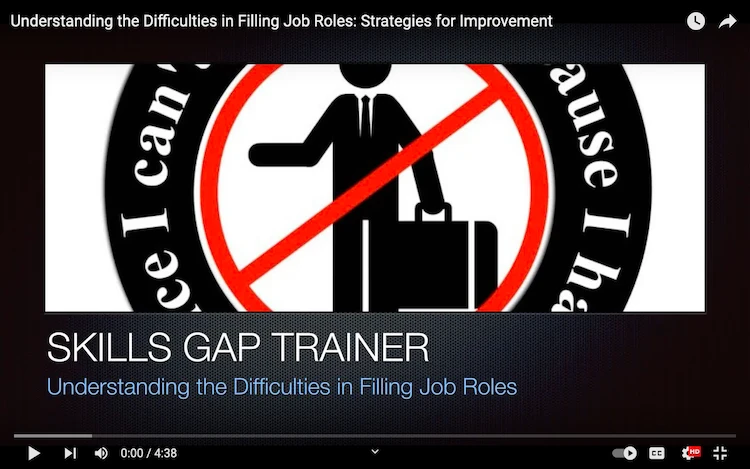The modern job market landscape presents its fair share of challenges. Employers struggle to fill open positions, while many candidates grapple to secure suitable employment. This dichotomy is especially noticeable when examining five specific demographics: small business entrepreneurs, entry-level workers, recent graduates, professionals with outdated or inappropriate skills, and new immigrants.
The small business entrepreneur, particularly those who have been out of the industry for a while, often face hurdles in reentering the job market. The rapidly evolving nature of the contemporary job market, characterized by new technologies and shifting industry dynamics, may make it difficult for them to match the current demand for skills. A lack of recent, relevant work experience can further hamper their chances.
Entry-level workers and graduates without industry experience face a similar predicament. They confront a catch-22 situation, where they require experience to land a job but need a job to gain experience. This situation is largely influenced by the ‘short term investment model’ mindset, where employers prioritize hiring individuals who have done a similar role in the past. This approach overlooks potential talent and stymies the professional development of fresh graduates or entry-level workers. Without investing in these individuals, we risk creating a void of qualified professionals in the future, thereby increasing the difficulty of filling critical vacancies.
Professionals with antiquated or irrelevant skills also encounter difficulties in the job market. Rapid technological advancements, changing business models, and evolving consumer expectations often render certain skills obsolete while simultaneously creating demand for new ones. Professionals possessing outdated skills must invest time and resources into re-skilling or up-skilling, which is not always feasible.
Finally, new immigrants are often confronted with a host of challenges, including credential recognition, cultural differences, language barriers, and unfamiliarity with local job search practices. Despite having qualifications and experience from their home countries, they often find it hard to secure employment commensurate with their skills and expertise.
Despite these different challenges, the onus should not be solely on the job seekers. Employers also need to revisit and reconsider their hiring practices. The extensive list of job requirements posted in job ads often makes it difficult, if not impossible, for any single candidate to fulfill them all. The result is a protracted and inefficient hiring process that leaves employers understaffed and prospective employees underemployed or unemployed.
Moreover, the insistence on hiring experienced professionals neglects the necessity of nurturing talent. Investing in entry-level workers and graduates, providing them with the requisite training and opportunities, will ensure a steady supply of skilled professionals in the future. The strategic modification of job requirements to broaden the applicant pool without compromising on quality can ease the hiring process and reduce vacancies.
Moreover, industries should partner with educational institutions and create pipelines for internships and cooperative placements, giving students practical industry experience that aligns with their coursework. Such partnerships can help students transition seamlessly from education to employment, helping to fill the experience gap and reduce the friction in the hiring process.
In conclusion, filling job roles doesn’t have to be a herculean task. It calls for a balanced approach that not only addresses the needs of employers but also takes into account the aspirations and potential of job seekers. By fostering an inclusive hiring ecosystem that values diversity of skills, experiences, and backgrounds, we can create a robust and vibrant workforce that can drive future growth.
Related books and resources:
“Talent on Demand: Managing Talent in an Age of Uncertainty” by Peter Cappelli – This book explores the new dynamics in the labour market and proposes a new approach to talent management that responds to the unpredictable demands of modern economies.
“The Talent Fix: A Leader’s Guide to Recruiting Great Talent” by Tim Sackett – Sackett’s book offers practical insights into modern recruitment strategies, addressing the challenges employers face and how they can revamp their hiring practices to attract the right talent.
“Bridging the Soft Skills Gap: How to Teach the Missing Basics to Today’s Young Talent” by Bruce Tulgan – While focusing on soft skills, this book also addresses the broader challenges of preparing the younger workforce for professional roles and how organizations can assist in closing the skills gap.
“The End of Jobs: Money, Meaning and Freedom Without the 9-to-5” by Taylor Pearson – Pearson discusses the changing nature of work, the rise of entrepreneurship, and how individuals can navigate the evolving job market, which can be particularly enlightening for small business entrepreneurs reentering the workforce.
“Retooling HR: Using Proven Business Tools to Make Better Decisions About Talent” by John Boudreau – This book provides a fresh perspective on utilizing data and analytics in HR practices to improve the hiring process and talent management.
“Work Rules!: Insights from Inside Google That Will Transform How You Live and Lead” by Laszlo Bock – This book offers insights into Google’s innovative management and hiring practices, providing valuable lessons for employers looking to attract and retain talent.
“Hiring for Attitude: A Revolutionary Approach to Recruiting and Selecting People with Both Tremendous Skills and Superb Attitude” by Mark Murphy – Murphy emphasizes the importance of hiring candidates with the right attitude in addition to the necessary skills, offering strategies that can help companies overcome the experience gap in new hires.
To see our Donate Page, click https://skillsgaptrainer.com/donate
To see our Instagram Channel, click https://www.instagram.com/skillsgaptrainer/
To see some of our Udemy Courses, click SGT Udemy Page
To see our YouTube Channel, click https://www.youtube.com/@skillsgaptrainer